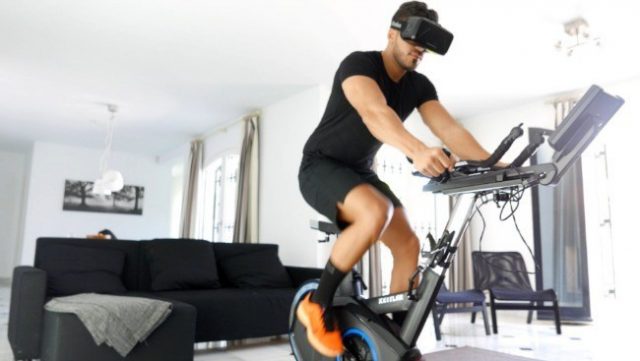VR or Virtual Reality is not a new concept but companies are coming up with different ways to use this technology, the most recent example being in the fitness and gymming sphere.
It’s no news that people don’t like to work out, so I applaud any attempt being made towards making this harrowing activity more fun and interactive.
We remember the massive popularity of Pokemon Go, right? Less than a week after the app was released, we saw gamers sprinting through the streets and parks across the world and according to this study on Influence of Pokémon Go on Physical Activity,
“Pokémon Go lead to significant increases in physical activity over a period of 30 days, with particularly engaged users increasing their activity by 1,473 steps a day on average, a more than 25% increase compared to their prior activity level”
And the reason why it was so popular is because people need to be mentally stimulated when engaging in a physical activity. Now that we know that, we are in a position to appreciate the attempts being made in the VR field, which is essentially to use the addictive pull of video games to make people forget that they are actually working out.
Innovative Approaches To Fitness
Of course, even VR isn’t exactly new when it comes to fitness, what with the world’s first VR spin class debuting at a Hong Kong gym, more than three years ago, where cyclists are surrounded by a curving, 270-degree virtual reality screen.

Essentially, the exercisers are thrust into a virtual world and their movements on the bike are synchronised with the music and graphics on screen as they find themselves cycling up a steep mountain or racing through the streets of a metropolitan city, all while working out in an air-conditioned fitness center.
Researchers at Germany’s Bielefeld University are going above and beyond and developing something called the Intelligent Coaching Space, aiming to pair VR with human biomechanics, providing a more efficient way for athletes to track and assess movements says Bielefeld researcher, Thies Pfeiffer was reported explaining, “You can focus much more on your tennis skills if you do not have to run around and pick up the physical balls most of the time”.
Also Read: Augmented Reality In Video Gaming Will Make People Go Insane
The Pull For The Masses
The most obvious advantage is that it aims to motivate and inspire all the lazy ones out there, essentially by giving people a way to trick their mind into doing something that their bodies vehemently resist. VR also gives the people a way to do things they never could in real life, like cycling across snowy mountains, be it due to financial or mental constraints.
And the gamifying aspects of the technology, like setting and beating high scores, racing past (virtual) opponents, could serve as a fun way to work out, especially for the reluctant ones out there.

What It Means For The Fitness Industry – The Downsides
But then again, once you have explored all the terrains, beat all the high scores, what will keep you wanting to go back and keep exercising? The problem with superficial motivation, in the form of games, is that you will only engage in the exercise until the reward has been taken away.

Take the VR equipment developed by Munich-based company, Icaros, as an example. It offers a core workout regime by making it seem like users are flying and deep-ocean diving. And it was hugely popular at first, with around 200 gyms across the world having installed the machines, but eventually, users got bored with the two settings pretty fast.
And that is not even the biggest challenge. The main challenge that VR has to overcome is the cost. The machine developed for fitness centres by Icaros cost about $10,000 after including shipping and other costs. Though they have a cheaper version for home-use which costs about $2,000, it is still extremely pricey.

There will be very few gyms and fitness centres willing to invest in such an expensive setup but even if they do, they will be looking for ways to recoup the money or even break even as soon as possible, leading to increase in membership costs.
Another potential downside is that VR obscures your view, making it impossible for you to assess your movements and to judge whether the posture and alignment of your body is right. Usually, the personal trainers help you with the movements and tell you if you’re risking body injury, but with VR, even that personal touch is lost.

With such high barriers, virtual reality clearly isn’t going to become mainstream any time soon. However, I’m still hopeful that as the technology better develops and becomes more affordable, it could easily be used to serve the greater good.
Image Credits: Google Images
Other Recommendations:
http://edtimes.in/2017/09/sexed-introducing-virtual-reality-porn/


































